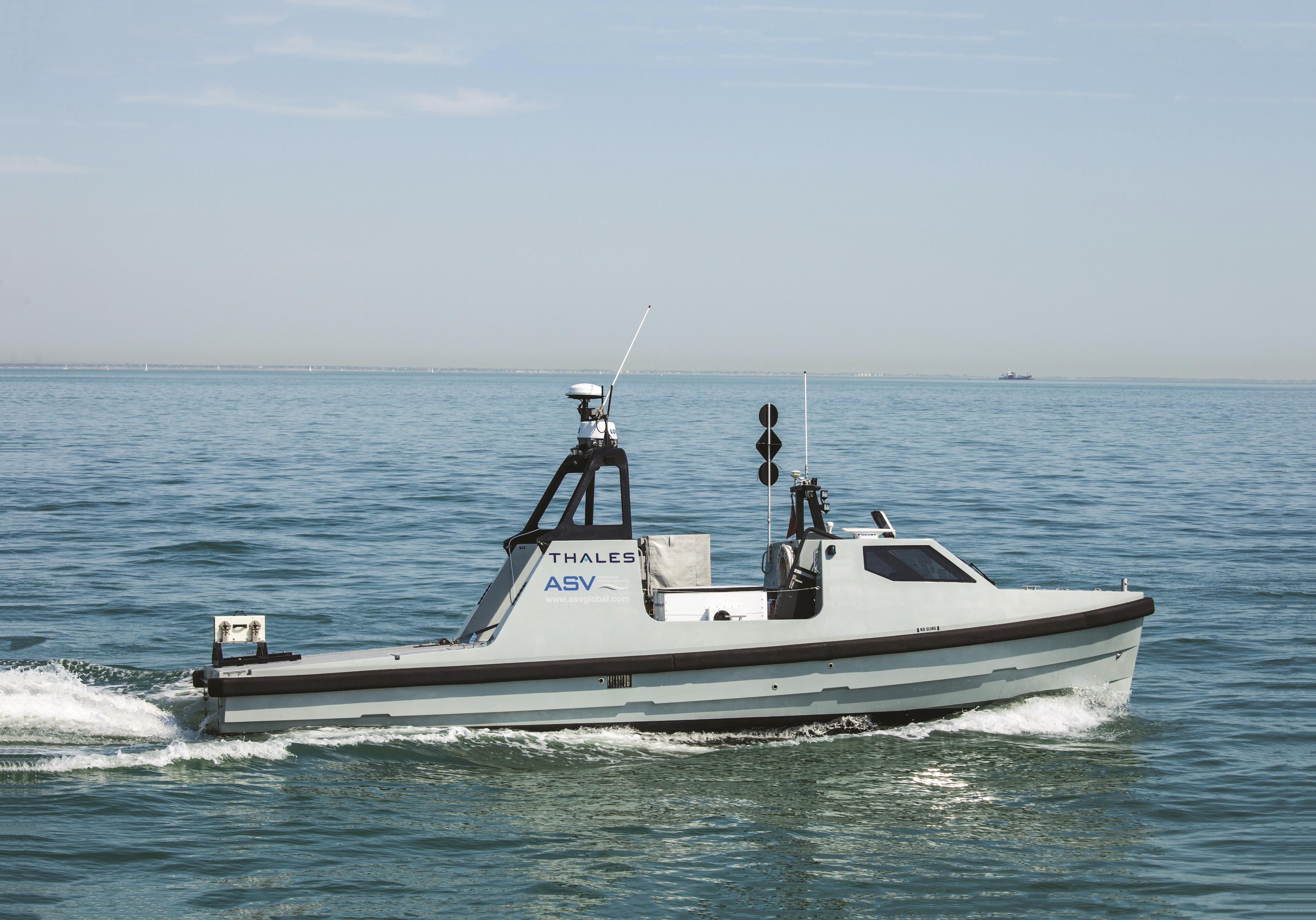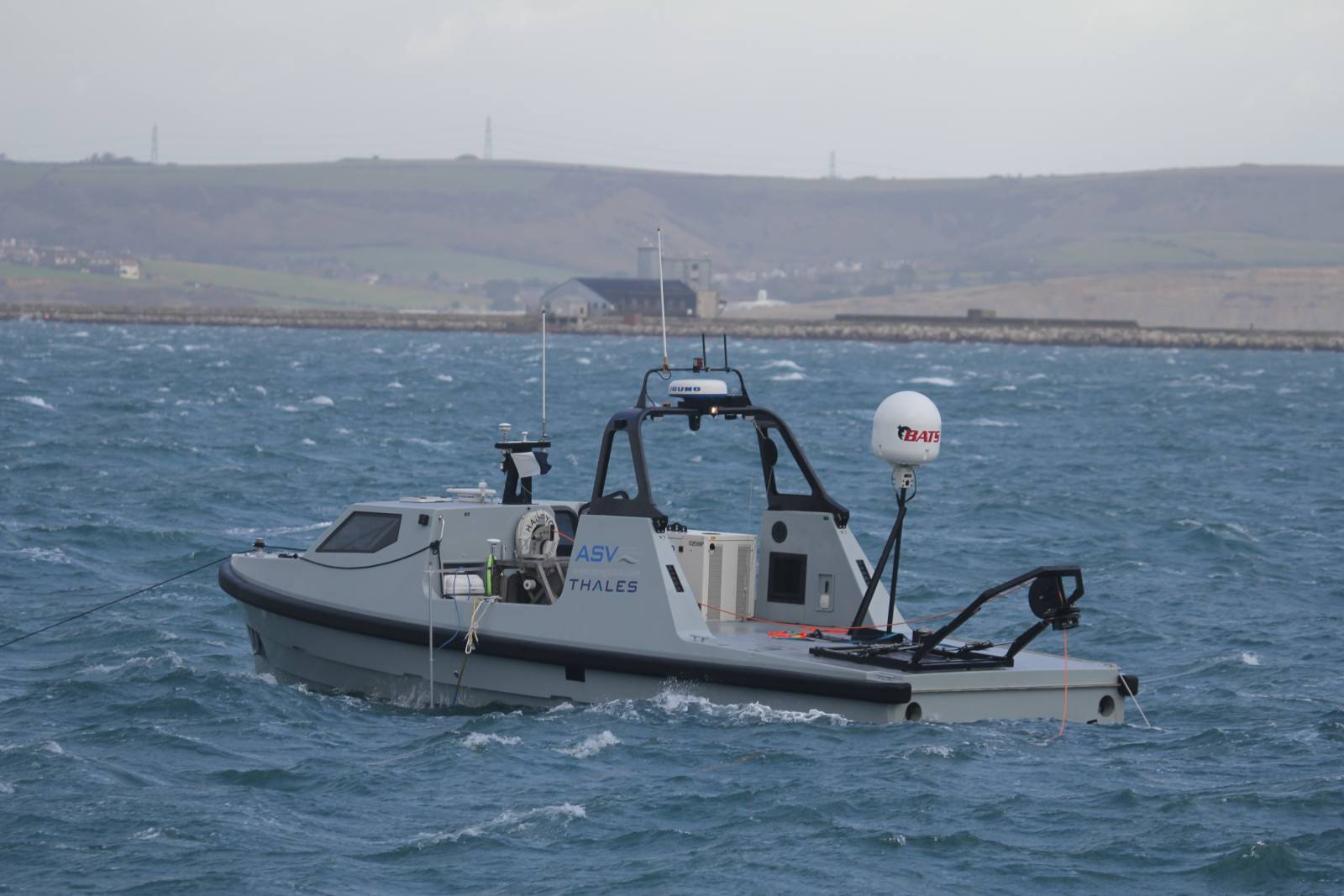Analysis: Thales releases new information on future maritime mine warfare approach
Maritime mine warfare technology is about to come of age. As 2020 draws to a close, four years of intensive development and testing is about to culminate in a breakthrough which will remove Royal Navy personnel from the supremely dangerous task of mine clearance. Here’s what’s happening.
Follow Navy Recognition on Google News at this link
 Thales ASV (Picture source: Thales)
Thales ASV (Picture source: Thales)
According to some estimates, there are perhaps a million naval mines of more than 300 types are in the inventories of more than 60 navies, excluding the US which doubtless has many more. Their simplicity and affordability bring them within reach of even the poorest nations and terror groups.
For decades, sea mines have been used in every armed conflict with a naval element. Some self-neutralise after a given time and many have been cleared. But it only takes one to sink a ship. And there are plenty of live mines which remain in our seas, unseen, unknown and ready to detonate.
At the moment, clearing mines is a slow, extremely dangerous process. With the British Royal Navy, which leads the world in mine countermeasures, the first stage is to enter the minefield in one of its Hunt-Class or Sandown-Class Mine Counter Measure Vessels, towing one of Thales’s sophisticated Towed Synthetic Aperture Sonars to look for mines. The second stage is to classify and destroy the target. Sometimes this can be achieved with a remote-controlled submersible; sometimes it requires the services of highly trained specialist divers. It’s hard to think of a more dangerous job.
There is some good news, however. Thales has been working on a solution for several years now investing its own R&D funds, and supported by a joint programme under the Lancaster House Treaty, (which assures close collaboration and technology-sharing between the United Kingdom and France for defence and security cooperation). This solution, when it passes its final tests later this year, will set a new standard in mine countermeasures.
 Thales ASV (Picture source: Thales)
Thales ASV (Picture source: Thales)
Faster, safer and assured mine warfare capability:
In the second half of 2020, a new mine warfare capability will be available, which can not only detect, classify and destroy mines faster than any other solution but which will also completely eliminate danger to human life.
Unlike any other mine countermeasures system in the world, it is comprehensive, proven and fully autonomous, with autonomous unmanned vessels and its own portable operating centre and, from which a complete mine-clearing operation can be planned, executed and monitored.
There are several components to the solution all of which have been tried and tested individually and in concert with each other. The Royal Navy had considerable input to the design and development. A system comprises at least one USV (Unmanned Surface Vehicle) – ideally two - equipped with a Towed Synthetic Aperture Sonar, an unmanned submersible for classifying the detected threat and a submersible for destroying the target and a powerful autonomy engine which interacts with the equipment to detect, classify and locate mines.
In crude terms, the operator tasks the boat with searching a defined area and the autonomy engine takes it from there. Live streams of data and video are streamed to the mobile operations centre, which can be many kilometres distant, either on a ship or quayside. When a mine is located, the USV can be equipped to deploy a remotely operated vehicle (ROV), which is used to nullify the threat. Two USVs, one to tow the sonar and the other following it, ready to destroy mines as they are detected, make the job even more efficient.
Unlike traditional systems on dedicated mine hunting and sweeping ships, Thales’s entire solution can be packed up into containers and rapidly deployed anywhere in the world. It can also be used in multiples and in concert with allied forces, making the clearing of a path through a minefield quicker and safer than ever before.


























